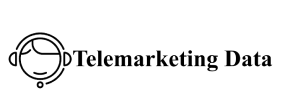Personalize Outreach Personalizing outreach efforts is essential in fostering meaningful connections with communities, especially in a diverse state like Georgia. With its rich cultural tapestry and varying demographics, understanding regional data can significantly enhance the effectiveness of outreach initiatives. Personalization georgia phone number list tailoring messages and strategies to resonate with specific audiences, thereby increasing engagement and positive responses. By leveraging data insights, organizations can craft messages that reflect local values, needs, and preferences, ultimately leading to more successful outreach campaigns.
Understanding Georgia’s Demographics Personalize Outreach
To effectively personalize outreach, it’s crucial to start with a comprehensive understanding of Georgia’s demographics. The state is characterized by its diverse population, including a building a phone number list for post-holiday follow-ups of urban and rural communities, various ethnic groups, and differing socioeconomic statuses. For example, urban areas like Atlanta and Savannah have a higher concentration of younger, diverse populations, while rural regions may have older demographics with different priorities. By segmenting outreach efforts based on these demographic insights, organizations can create messages that resonate with specific groups, enhancing overall engagement.
Analyzing Regional Needs
Each region in Georgia has unique needs and challenges that can be identified through careful analysis of regional data. For instance, areas with high poverty rates may require outreach focused on economic development and job training programs. Conversely, regions experiencing rapid growth cnb directory benefit from initiatives aimed at infrastructure development and community services. Understanding these regional needs helps organizations tailor their outreach efforts to address pressing issues, making their campaigns more relevant and effective.
Utilizing Local Insights
Incorporating local insights into outreach strategies is vital for personalization. Engaging with community leaders, conducting surveys, and hosting focus groups can provide invaluable qualitative data that complements quantitative statistics. These local insights can reveal not just the needs of the community, but also the best channels for communication. For example, while social media may be effective in urban areas, traditional methods such as town hall meetings might be more appropriate in rural communities. By aligning outreach methods with local preferences, organizations can enhance their connection with the audience.
Crafting Targeted Messages
Once organizations have a solid understanding of the demographics and needs of a specific region, the next step is crafting targeted messages. Personalization in messaging involves not just the content but also the tone and style used. For example, outreach to younger audiences in urban areas might incorporate trendy language and digital formats, while communication with older populations may take a more formal approach. Tailoring messages to fit the audience’s preferences fosters a sense of relevance and connection, encouraging higher engagement rates.
Implementing Feedback Mechanisms
Feedback mechanisms are critical for continuous improvement in outreach efforts. Organizations should establish channels for community feedback, whether through surveys, social media interactions, or direct communication. Analyzing this feedback can provide insights into what resonates with the audience and what areas might need adjustment. By being responsive to community input, organizations can refine their messaging and strategies, ensuring they remain aligned with the evolving needs of the region.

